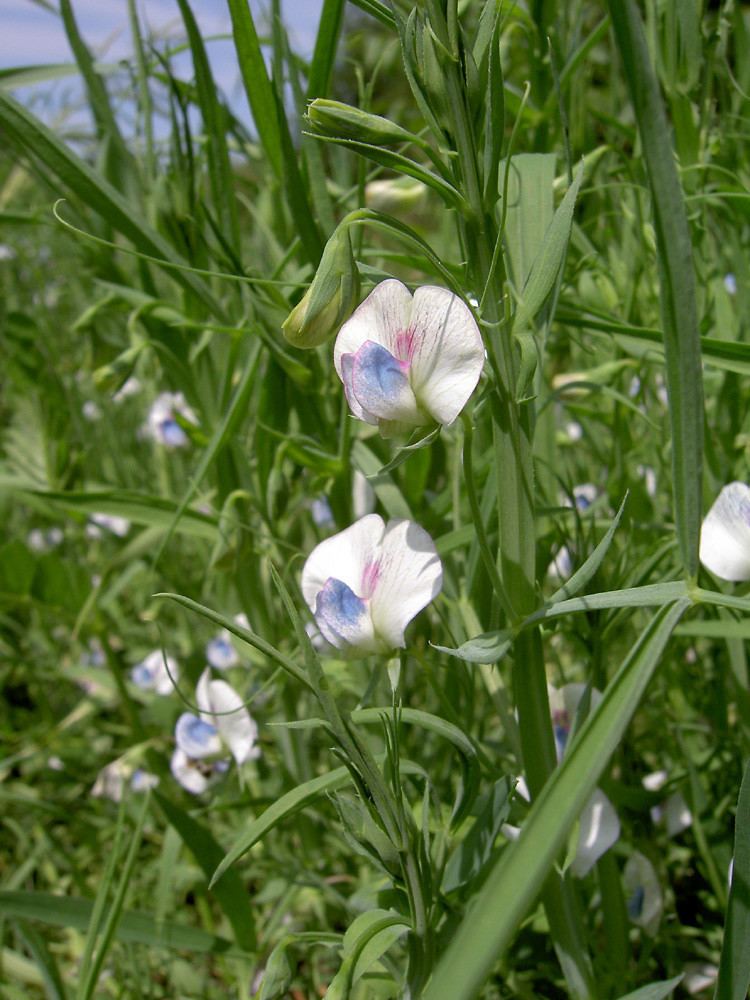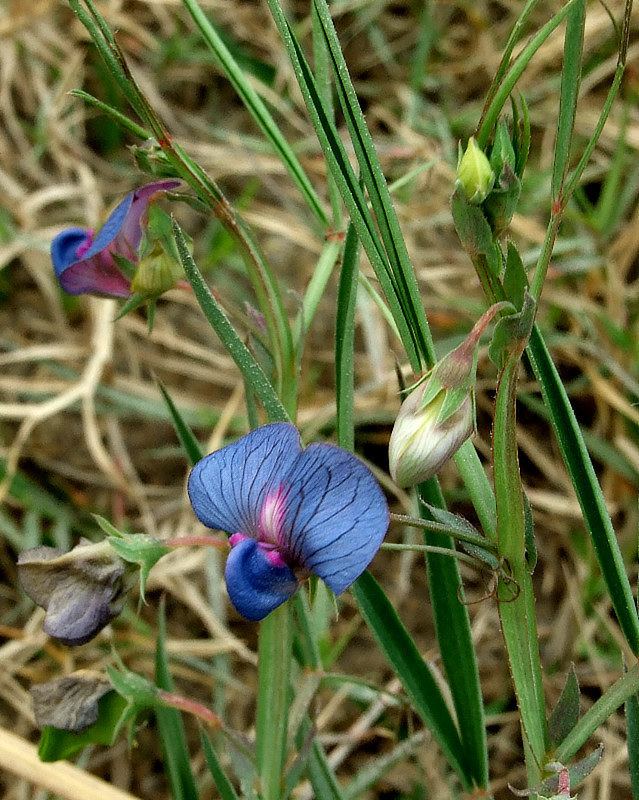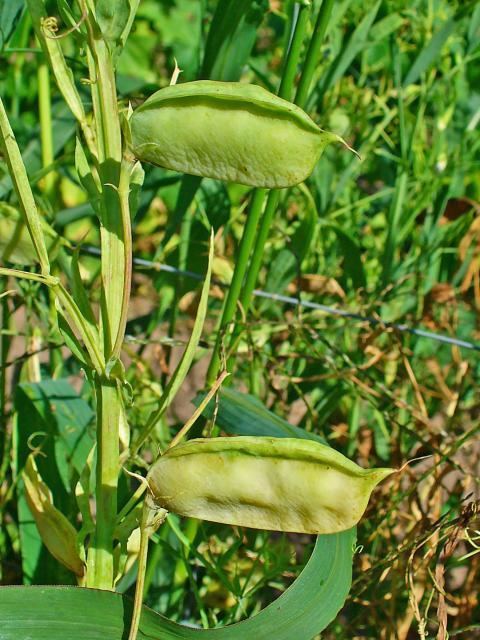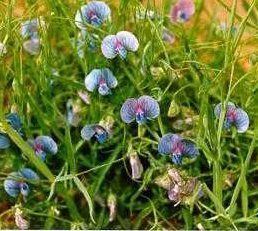Tribe Vicieae Rank Species | Genus Lathyrus Higher classification Lathyrus | |
 | ||
Similar Gachas, Lupin Bean, Broad bean, Chickpea, Common Vetch | ||
Lathyrus sativus (Persian: خلر; Arabic: جلبان; Turkish and Uzbek: بورچک) is a legume (family Fabaceae) commonly grown for human consumption and livestock feed in Asia and East Africa. It is a particularly important crop in areas that are prone to drought and famine, and is thought of as an 'insurance crop' as it produces reliable yields when all other crops fail. The seeds contain a neurotoxin that causes a neurodegenerative disease when the seeds are consumed as a primary protein source for a prolonged period.
Contents
- Filme institucional iniav melhoramento do lathyrus sativus l chicharo
- Synonyms
- Cultivation
- Uses
- Seed ODAP characteristics
- Breeding programs
- References

Filme institucional iniav melhoramento do lathyrus sativus l chicharo
Synonyms

It is also known as grass pea, blue sweet pea, chickling pea, chickling vetch, Indian pea, white pea, white vetch, almorta or alverjón (Spain), guixa (Catalonia), jari grah (Croatia), λαθούρι (Greece), koçkulla (Albania), chícharos (Portugal), cicerchia (Italy), ሰበረ, sebere (Eritrea), ጓያ, guaya (Ethiopia), juleban (Arabic), "خللر" (Persian), കേസരിപ്പയർ (Malayalam) and khesari (Bangladesh and India).
Cultivation

Lathyrus sativus grows best where the average temperature is 10–25 °C and average rainfall is 400–650 mm per year. Like other legumes, it improves the nitrogen content of soil. The crop can survive drought or floods but grows best in moist soils. It tolerates a range of soil types from light sandy through loamy to heavy clay and acid, neutral or alkaline soils. It does not tolerate shade.
Uses

Seed is sold for human consumption at markets in Florence. Consumption of this pulse in Italy is limited to some areas in the middle part of the country, and is steadily declining.

Flour made from grass peas (Spanish: almorta) is the main ingredient for the gachas manchegas or gachas de almorta. Accompaniments for the dish vary throughout La Mancha. This is an ancient Manchego cuisine staple, generally consumed during the cold winter months. The dish is generally eaten directly out of the pan it was cooked in, using either a spoon or a simple slice of bread. This dish is commonly consumed immediately after removing it from the fire, being careful not to burn one's lips or tongue.
Grass pea flour is exceedingly difficult to obtain outside of Castilla-La Mancha, especially in its pure form. Commercially available almorta flour is mixed with wheat flour due to the fact that grass peas are toxic if consumed in significantly large quantities for prolonged periods of time.
Immature seeds can be eaten like green peas. Lathyrus sativus needs soaking and thorough cooking to reduce toxins.
The leaves & stem are cooked & eaten as chana saga (Odia: ଚଣା ଶାଗ) in parts of Odisha, India.
Seed ODAP characteristics
Like other grain legumes, L. sativus produces a high-protein seed. The seeds also contain variable amounts of a neurotoxic amino acid β-N-Oxalyl-L-α,β-diaminopropionic acid or ODAP or BOAA. ODAP is considered as the cause of the disease neurolathyrism, a neurodegenerative disease that causes paralysis of the lower body: emaciation of gluteal muscle (buttocks). The disease has been seen to occur after famines in Europe (France, Spain, Germany), North Africa, South Asia, and is still prevalent in Eritrea, Ethiopia and Afghanistan (pan handle) when Lathyrus seed is the exclusive or main source of nutrients for extended periods. Research has shown that ODAP concentration increases in plants grown under stressful conditions, compounding the problem.
The crop is harmless to humans in small quantities, but eating it as a major part of the diet over a three month period can cause permanent paralysis below the knees in adults and brain damage in children, a disorder known as lathyrism. (Kew Gardens)
Some authors have argued that this toxicity is overstated, and L. sativus is harmless as part of a normal diet. This legume is the only known dietary source for L-homoarginine and is preferred over arginine for nitric oxide (NO) generation.
L-ODAP is reported to act as an activator of calcium dependent protein kinase C (PKC).
Breeding programs
Breeding programs are underway to produce lines of L. sativus that produce less ODAP.
Certain varieties from western Asia have a low level of the neurotoxin and breeders and farmers are now exploring this genetic diversity to develop varieties that maintain the tolerance to extreme conditions, while at the same time achieving a safe level of the toxic compound.
